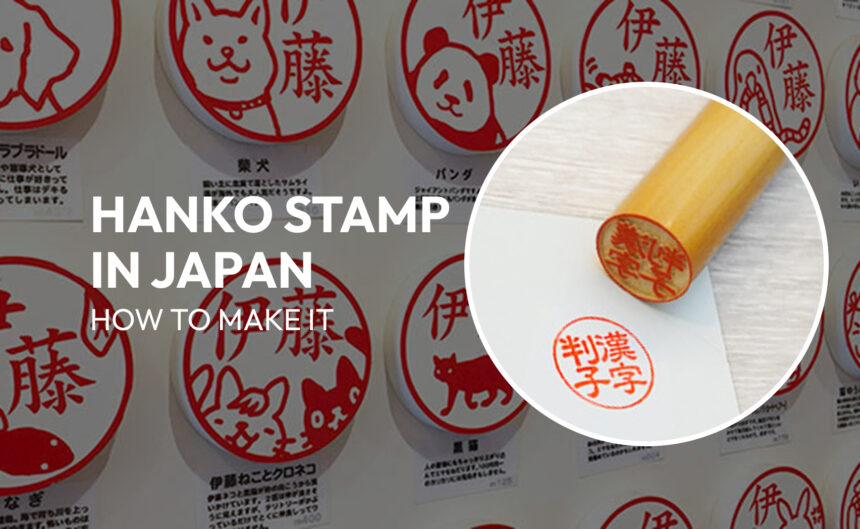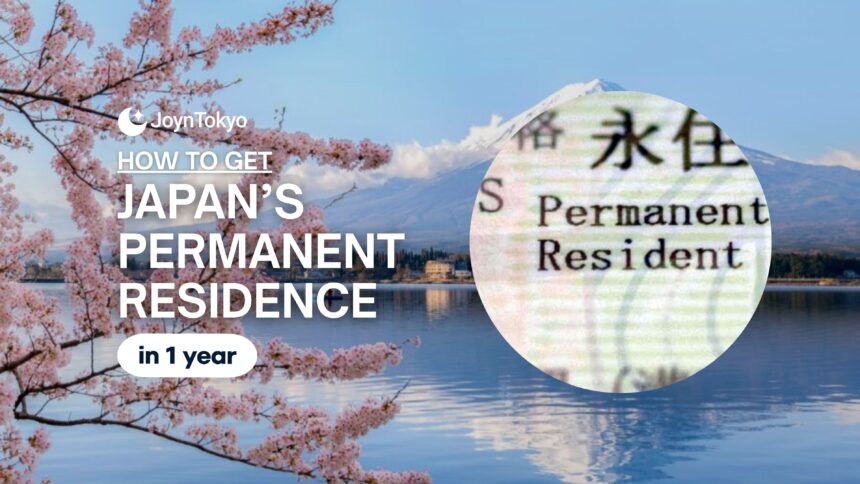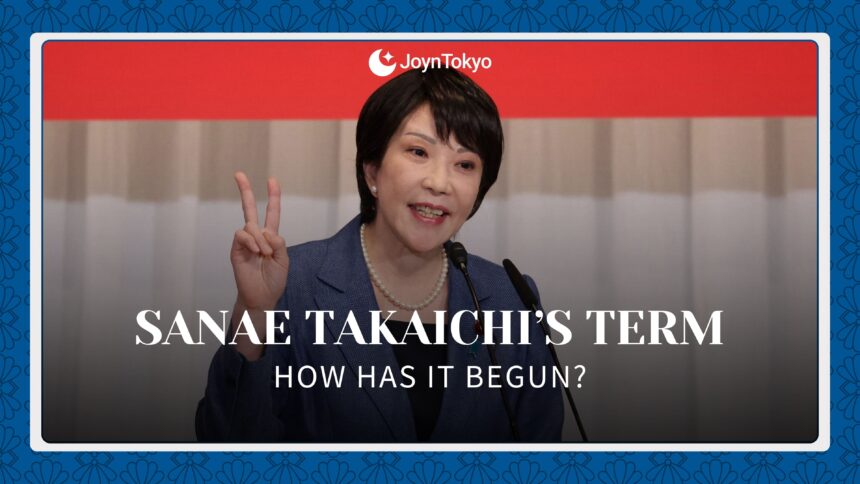Japan enjoys a reputation as a place of high-technology and almost impossible futuristic advances: ask anyone who has used a Japanese toilet, and they’ll tell you why.
But Japan is also a country that sticks doggedly to traditions, and aments their passing. In 2020, amidst the height of the Covid pandemic, a Buddhist temple held a funeral for hanko, as a concept, as more and more people work from home.
But what are hanko? Are they really dead? Was that funeral premature? Well, let us take you through it!
What is a Hanko Stamp in Japan?
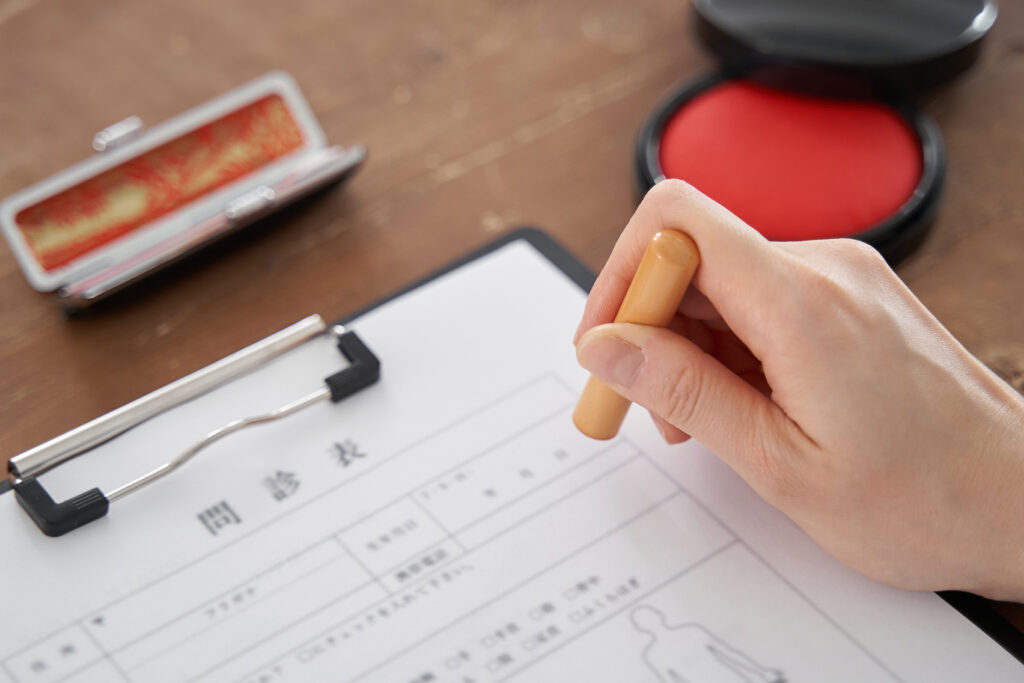
Hanko (はんこ)are small stamps used in lieu of signatures in Japan. They are typically quite small: usually shorter than a pen, yet a little bit wider in diameter. As such, they can be carried in one’s pocket easily, saving time when you need to “sign” documents. Hanko typically use kanji, and many common-name hanko can be bought from ¥100 stores — though for official purposes, the hanko needs to be registered with the local government, as we will explain below.
Hanko has been a part of Japanese life for generations. Though it began with the Emperor in the 8th Century (and soon became a commonality among the nobles of Japan) during the Meiji Revolution, which saw rapid and widespread changes in Japanese society, it became a daily object for everyday folk.
One other thing to note: hanko is often used interchangeably with inkan (いんかん), inkan itself is the word for the imprint made with the ink. This is used as an equivalent for a signature, and (if registered) is legally considered the same. But why hanko, and not signatures?
Why Do People Use Hanko Stamps in Japan?
Hanko can often be used as a quick, easy version of a signature. For most things you’ll use a hanko for, like “signing” for a parcel or delivery. For these things, you will not need a specially registered hanko — though you may get weird looks if your hanko stamp doesn’t match your name.
I say, “may,” because part of the value of hanko is that they are a symbol of trust. You can even hand your hanko to someone else (usually a spouse, partner, or trusted friend) and it can be assumed that you put your trust in that person: their word is as good as yours.
This can be very useful in certain situations. Do you need to do something at city hall that needs you to sign it, but you can’t take the day off work? Give your hanko to your husband, and he can do it for you. Do you have a registered delivery that needs to be signed for coming today, but you’re out of town? No worries, your girlfriend can use your hanko.
But as we’ve mentioned, there are more than a couple of types of hanko. So what are they?
Types of Hanko Stamps Explained
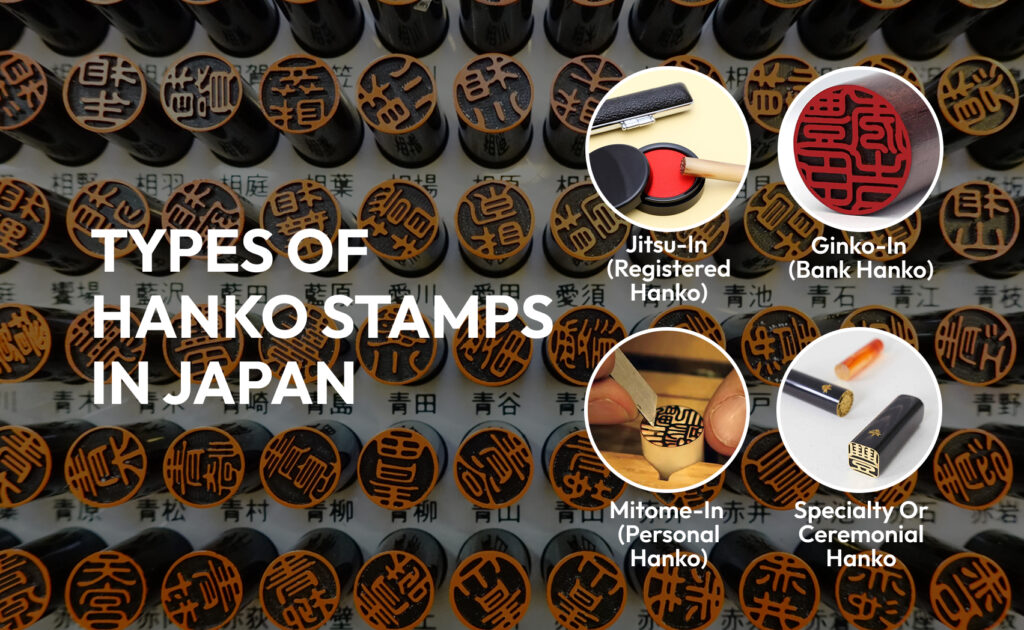
It might seem like it’s simple: just buy a hanko, and your days of carpal tunnel from signing things all day are over, right?
Wrong.
There are different “levels” of hanko, and those different levels become important if you want to use them. Let’s go through them.
Jitsu-in (registered hanko)

This is, as the name suggests, a hank that has been registered with the local government. Bear in mind that the local government is the only one with your hanko registered: if you move, you have to register it again. There is no national registry. The benefit is that, once your hanko is registered, it can be considered as good as a signature for governmental issues. As mentioned, for some things, you can even hand it to someone you trust.
Ginko-in (bank hanko)
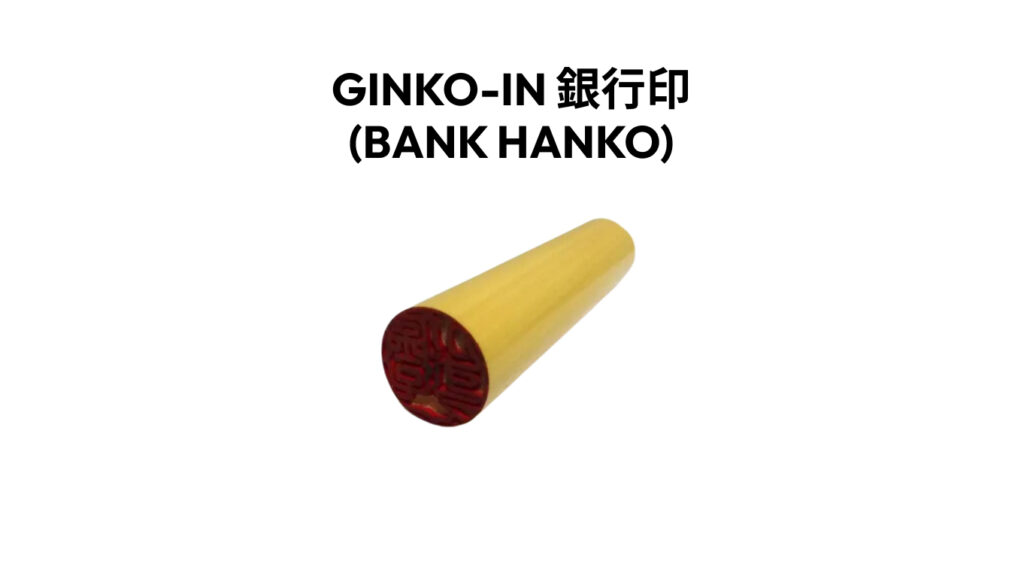
This is similarly a registered hanko, but rather than being registered to the local government, it is registered to your bank. As such, it is used for major decisions that you will make with your bank. While it will not be used in your day-to-day, if you ever have need to make major withdrawals (typically than ¥500,000 in a day, and in a single transaction) or need to close your bank account, then you will need this bank-registered hanko.
Mitome-in (personal hanko)
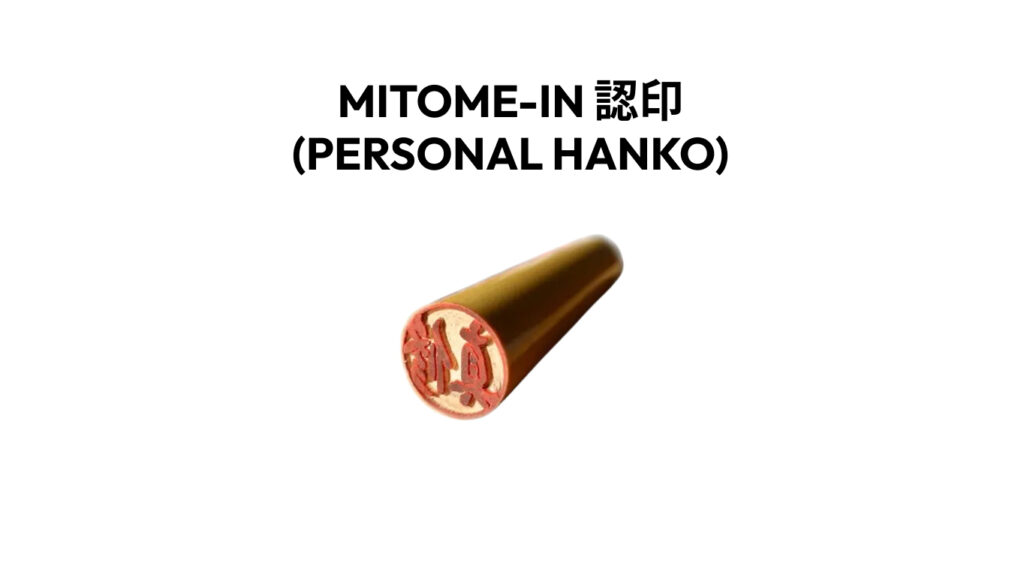
This is the simplest and most basic: no registration needed, nothing but the stamp you choose. You can buy one specifically with your name (whether in kanji or katakana) or you can buy one from a store that matches your vibe (for example: if your surname is “Waters,” you might chose one that says “水野”).
Do Foreigners Need a Hanko Stamp in Japan?
Generally speaking, foreigners do not need hanko: while they are extremely helpful to have in certain situations, many places will accept signatures. This goes for both legal and casual needs: if you need to sign a lease, or for a parcel, your signature will usually suffice.
That said, it might not be so simple in certain places. While Tokyo — which as the nation’s capital naturally has the most numerous foreign population — is more forgiving, more rural and/or more traditional establishments may not be.
However, for national government purposes, there is no need. Your signature is as good as your word, though getting a hanko can make things quicker in the long term, as well as shows willing that you want to be a part of the Japanese community.
How to Get a Hanko Stamp in Japan
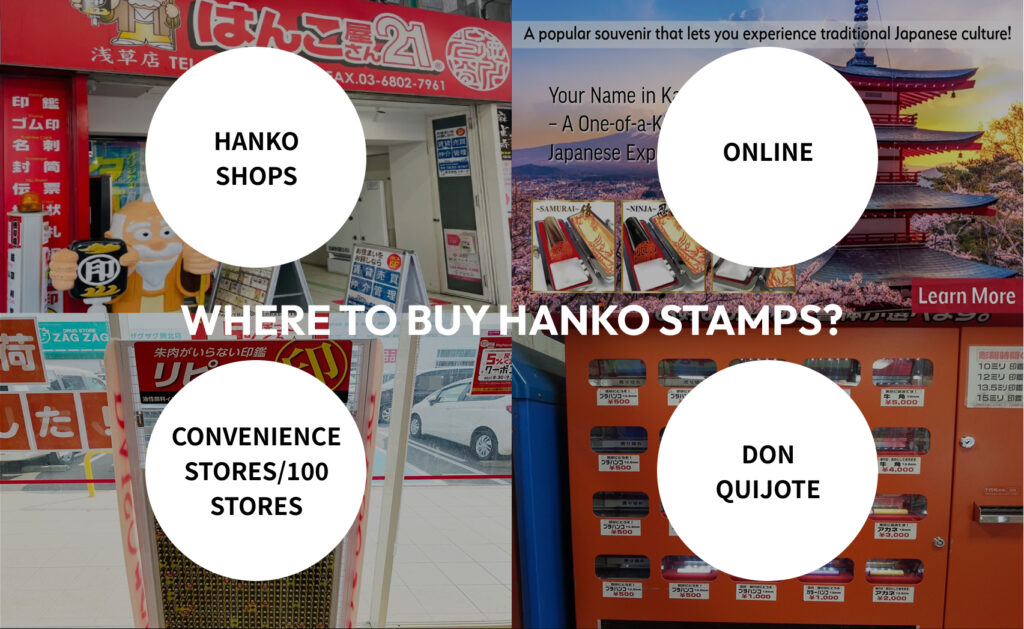
Hanko can be bought in many places. As mentioned, if you’re only looking for a simple Mitome-in, then you can get them from many ¥100 stores. But this will only be useful if you have a name that easily translates into Japanese (whether that be “Waters” to “水野”, in terms of literal meaning, or “Smith” to “渡辺” (Watanabe) in terms of feeling).
Otherwise, you’ll likely need to get one made yourself. Once, in the golden age of hanko, there was a hankoya (or, hanko-store) in every village. Alas, these are more and more a rarity, though they can still be found in some places. However, when you want personalized services, you pay personalized prices.
But you can also get this service done in places like Don Quixote, Japan’s favorite Everything Store. They are automated, so you won’t get the craftsmanship, and are often used a souvenirs. But if it has your name written on it, and it can stamp, it can be registered.
How to Register a Hanko Stamp (Jitsu-in)
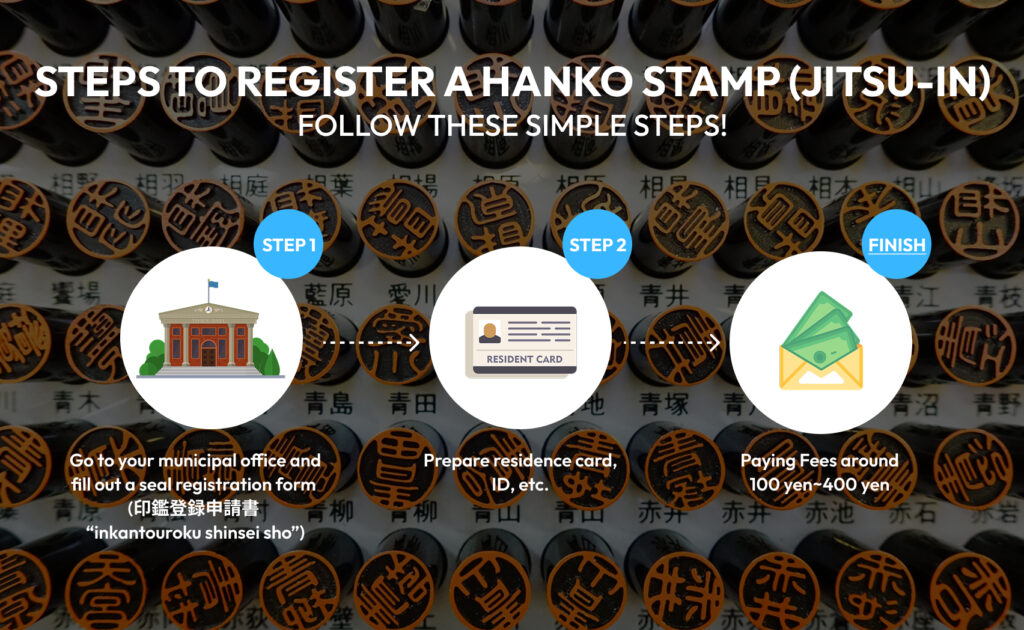
For all the difficulties of Japanese bureaucracy, registering a hanko is surprisingly easy. Many city halls (especially in large cities) will have a dedicated booth specifically for registering your hanko. Simply take your hanko, your MyNumber card, and be prepared to pay a nominal fee. It really is that easy.
What Happens If You Lose Your Hanko Stamp?
The first thing to do is not panic. Go to city hall with your MyNumber card, or Zairyu, and tell them that you’ve lost your hanko. While nine times out of ten it’ll be behind your couch, as mentioned, your hanko is your word. Reporting it lost and, ideally, registering a new one, can help if some unscrupulous fellow has gotten their grubby mitts on your beloved stamp.
Luckily, Japan’s bureaucracy, while labyrinthine, is understanding, and if you make your issue known, you will get the help you need.
Hanko Stamp FAQs
So, to sum up:
- Do foreigners really need a hanko?
Strictly speaking, no. But it will make your life a lot easier.
Can you use the same hanko for everything?
Strictly speaking, yes, though you will need to register it with your bank and your local government.
- Is hanko still required in 2025?
Strictly speaking, no, most places do not require them, but there are some places that may require them, so it might be better safe than sorry.

